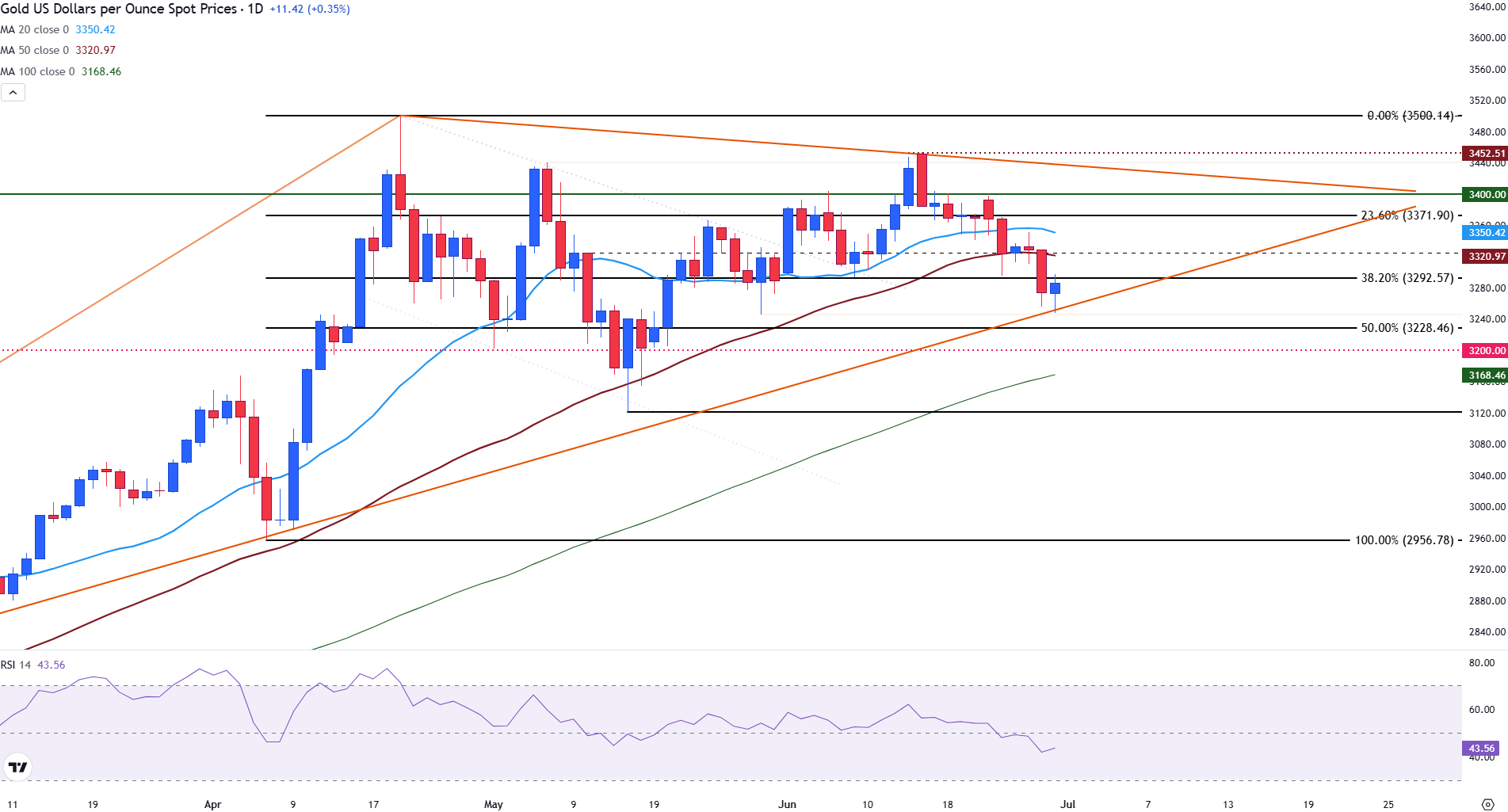Physical Address
304 North Cardinal St.
Dorchester Center, MA 02124
Physical Address
304 North Cardinal St.
Dorchester Center, MA 02124

Gold (XAU/USD) is entering the week below $3,300 at the time of writing on Monday as markets brace for heightened volatility ahead of Friday’s US Independence Day holiday.
Political developments in the United States have taken center stage, with the US President Donald Trump’s administration accelerating efforts to pass the “One Big Beautiful Bill” by his self-imposed July 4 deadline.
The legislation, which narrowly passed the Senate over the weekend, proposes a sweeping overhaul of the tax code, including broad deductions funded by cuts to Medicaid and green energy programs.
As debate intensifies, concerns over rising fiscal deficits and long-term inflation are beginning to weigh on the US Dollar, providing a supportive backdrop for Gold.
The Nonfarm Payrolls (NFP) report for June is scheduled for Thursday this time, earlier than usual due to the Fourth of July Independence Day holiday in the US on Friday.
Traders are positioning cautiously, anticipating potential shifts in currency and yield dynamics that could drive further demand for the precious metal.
Gold is trading at $3,285 at the time of writing on Monday, confined between the 50% and the 38.2% Fibonacci retracement levels of the April low-high move at $3,228 and $3,292, respectively.
This follows a recent break below both the 20-day and 50-day Simple Moving Averages (SMAs), which are providing additional resistance above the $3,300 psychological level at $3,350 and $3,320, respectively.
The metal’s recovery attempts remain capped by resistance around the 38.2% Fibonacci retracement level at $3,292, while downside risks persist as momentum weakens.
Gold (XAU/USD) daily chart

The Relative Strength Index (RSI) indicator on the daily chart is currently pointing downward, near 44, indicating increasing bearish momentum without yet entering oversold territory. A daily close below $3,228 could open the door toward the 100-day SMA at $3,168, while a sustained push back above $3,292 would be needed to shift short-term sentiment back to the upside.
In the world of financial jargon the two widely used terms “risk-on” and “risk off” refer to the level of risk that investors are willing to stomach during the period referenced. In a “risk-on” market, investors are optimistic about the future and more willing to buy risky assets. In a “risk-off” market investors start to ‘play it safe’ because they are worried about the future, and therefore buy less risky assets that are more certain of bringing a return, even if it is relatively modest.
Typically, during periods of “risk-on”, stock markets will rise, most commodities – except Gold – will also gain in value, since they benefit from a positive growth outlook. The currencies of nations that are heavy commodity exporters strengthen because of increased demand, and Cryptocurrencies rise. In a “risk-off” market, Bonds go up – especially major government Bonds – Gold shines, and safe-haven currencies such as the Japanese Yen, Swiss Franc and US Dollar all benefit.
The Australian Dollar (AUD), the Canadian Dollar (CAD), the New Zealand Dollar (NZD) and minor FX like the Ruble (RUB) and the South African Rand (ZAR), all tend to rise in markets that are “risk-on”. This is because the economies of these currencies are heavily reliant on commodity exports for growth, and commodities tend to rise in price during risk-on periods. This is because investors foresee greater demand for raw materials in the future due to heightened economic activity.
The major currencies that tend to rise during periods of “risk-off” are the US Dollar (USD), the Japanese Yen (JPY) and the Swiss Franc (CHF). The US Dollar, because it is the world’s reserve currency, and because in times of crisis investors buy US government debt, which is seen as safe because the largest economy in the world is unlikely to default. The Yen, from increased demand for Japanese government bonds, because a high proportion are held by domestic investors who are unlikely to dump them – even in a crisis. The Swiss Franc, because strict Swiss banking laws offer investors enhanced capital protection.